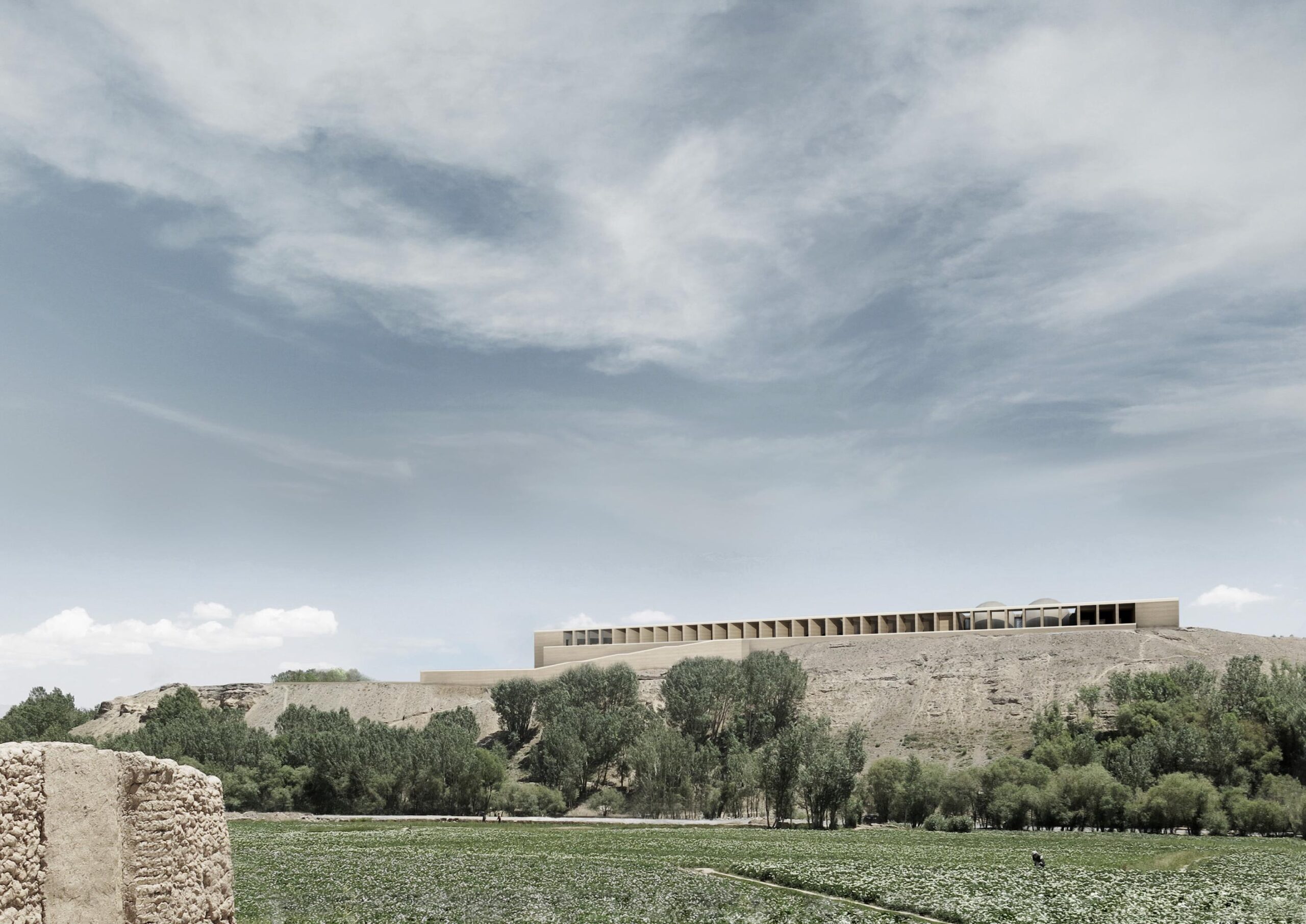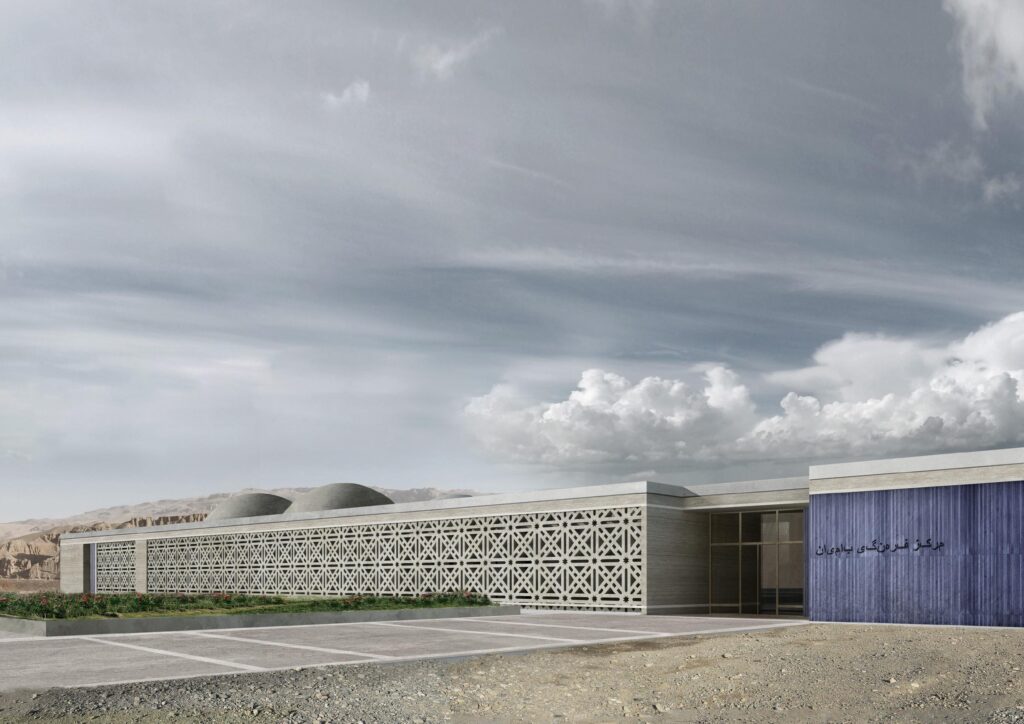
The starting concept of the project has been to generate form and orientation of the building from the surrounding landscape itself; hence, the fundamental orthogonal footprint aligns to the course of the Foladi River while getting a slight deviation to focus on the perspective of the western Buddha. While the southern part of the building remains committed to this pattern, the side overlooking the valley unfolds like a fan to embrace the whole length of the cliffs, reaching to the opposite landmark of the eastern Buddha.
In this way the horizontal layout integrates the different views, transforming them in architectural elements: whereas the complete panorama of the cliffs can be enjoyed from the outside promenade unrolling in front of the new cultural centre, a sequence of arches on the inside accompanies and guides the visitor in the dynamic perception of partial views, stimulating a deeper, individual experience and suggesting different levels of confrontation between human scale and monumental dimension.
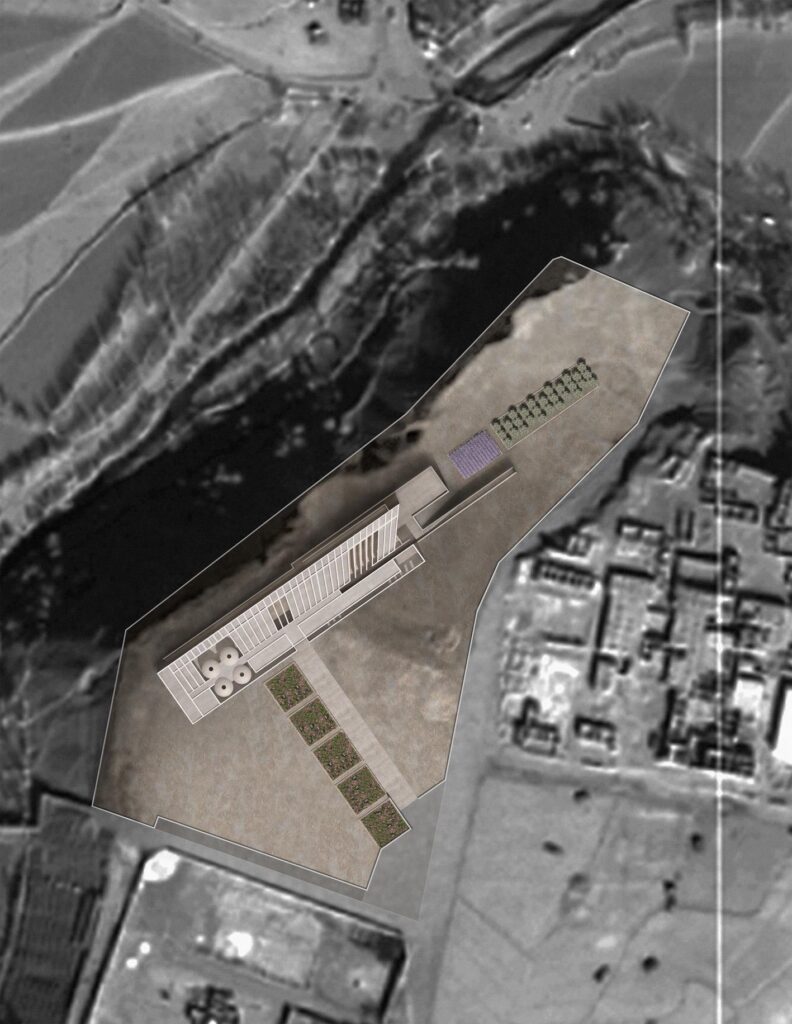
On the other way, the building aims at encouraging a reflection on its cultural mission through the architectural medium: the southern front welcomes the visitor with the familiar and recognizable image of a walled compound, like the dwelling form of the Qala, typical of rural Afghanistan; at the same time, the presence of decorative features like interlaced geometric fretwork and a lapis lazuli-coloured wooden screen denies the traditional defensive character of the Qala, reminding of the singularity of the building and the public spirit of its function.
Surprisingly, once stepped beyond the wall, instead of finding us in a withdrawn space, we discover the unexpected, unique character of the cultural centre, opening itself to the surrounding landscape.
It is easy then to catch the message that the cultural centre wishes to share with its guests: although we can feel the contentment granted by accustomed forms and materials as we stroll through the public parts of the building, their disposition does induce us to literally see beyond, showing up different perspectives and symbolically inviting us to greet them not as a threat but as a peaceful chance.
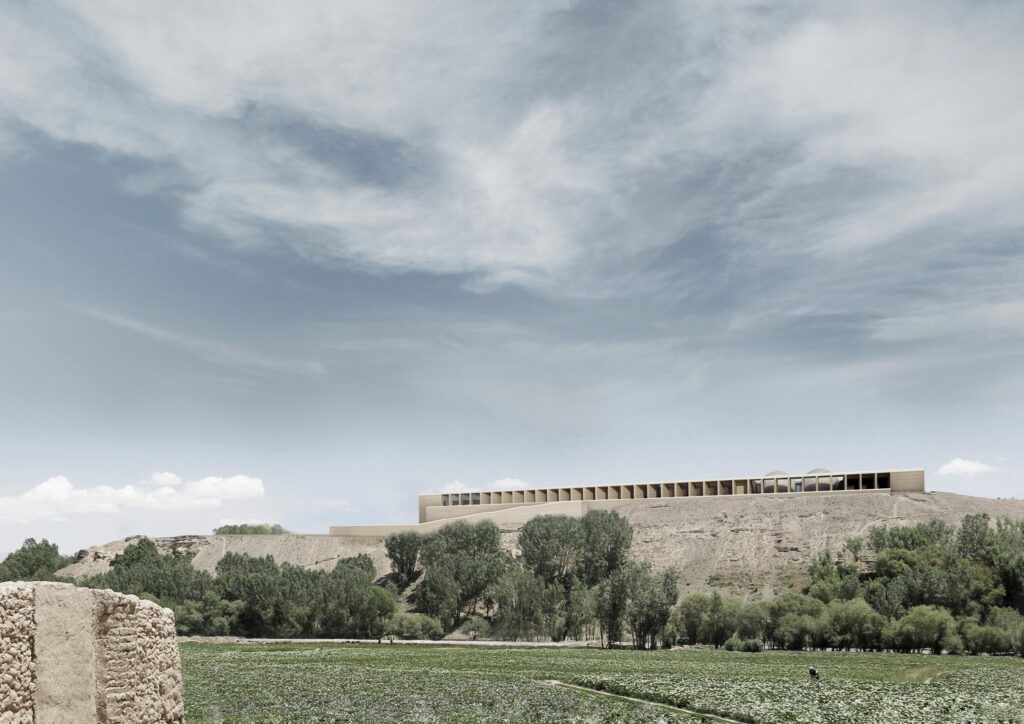
Yet, should we look for more privacy, that’s possible, too: we can find retreat in more secluded spaces, like in the smaller ones on the south, facing the quiet linear garden beyond the wall, or in the library, with its own secret courtyard, or even enjoy the almost meditative atmosphere of the round domed, light-flooded schoolrooms.
The northern front displays an array of oblique transversal walls in an ever-changing sequence of light and shadow, mirroring the alternation of glimmering rock surfaces and darkish caves on the other side of the valley.
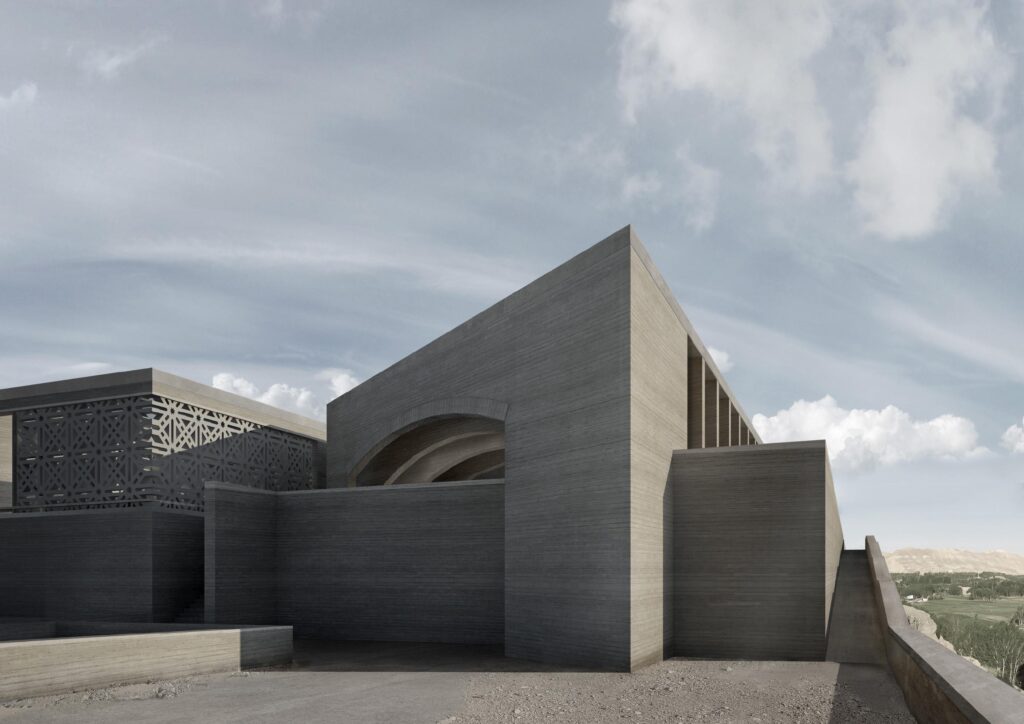
As the building stretches out onto the slope, its short transversal façade takes the form of a monumentally powerful architectural statement, gathering different volumes both horizontally and vertically and thus formally corresponding to the complex commitment of achieving harmony between different peoples and cultures. Consequently, this is where the expected expansion will be found: instead of weakening the purity of the building with the addition of further constructions, the area is going to be carved underneath the cultural centre itself, reproducing the coexistence of addictive and subtractive architecture typical of nearby cave dwellings (in this regard a partial reinforced concrete structure beneath the centre can be arranged beforehand by the first construction phase).
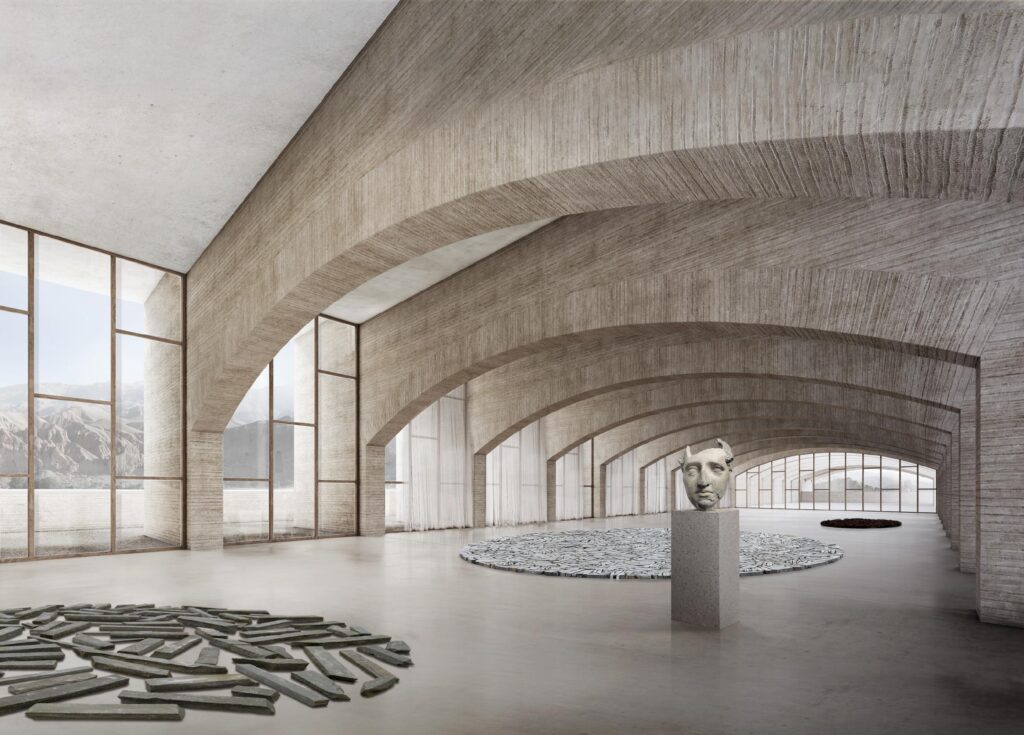
Materials and techniques:
The goal is to keep a low profile, taking advantage of local resources in terms of knowledge and materials. Wide use of bricks, provided in their full range of variations depending on their role: from khesht-i-kham, sun-dried bricks, to the stronger, baked khesht-i-pukhta, suitable for arches and higher load-bearing walls (a concealed, reinforced concrete inner structure might be provided). Furthermore, mud cladding, like in the schoolroom domes (gunbad), and pakhsa can increase diversity and general quality: the idea underneath is to establish a fruitful interchange with local enterprises and determine together single formal and technical aspects.
Although the structure is mainly based on simple flat-roof construction, some more challenging elements (like domes and wide-spanning arches) are present: one is not supposed to underestimate the capabilities of the Afghan constructors, so astoundingly showed in many monumental buildings of the past (among others the Qala-e-Bost arch). Precious particulars, on the entrance side and in indoor details, can underline the prestige of the building: we think about the use of lapis lazuli, to be founded in the nearby mountains, to stain wood and glaze tiles, the latter ones hidden like a treasure in the linear garden beyond the wall.
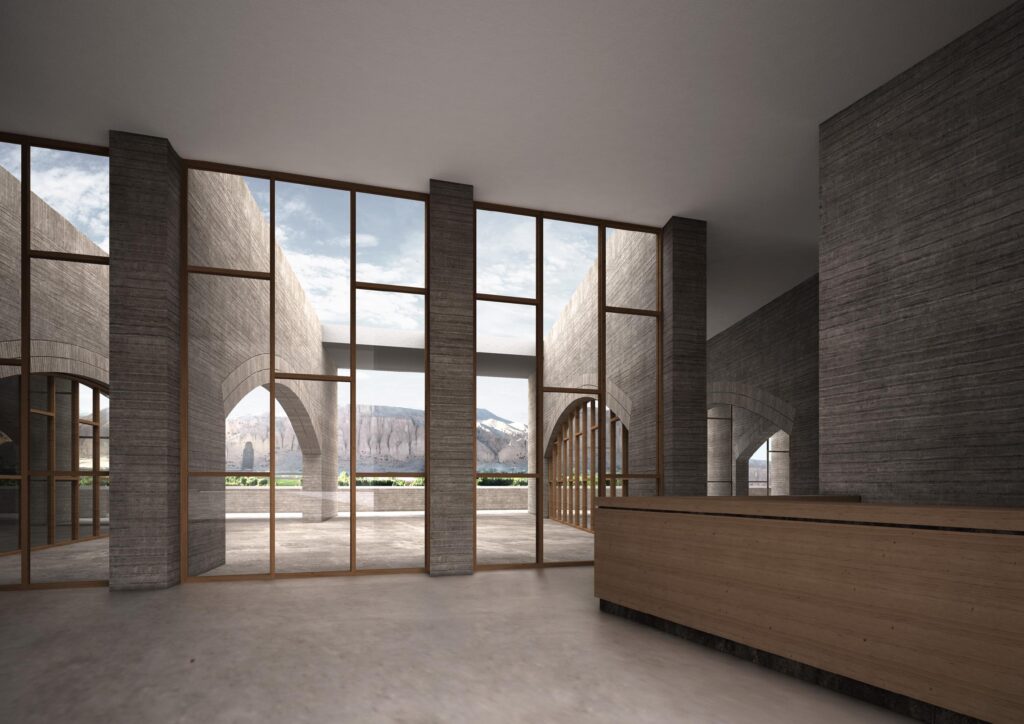
Landscaping:
In order to achieve a non-artificial, site-oriented appearance and make maintenance easier, the arrangement of external garden-like areas is reduced to clearly marked beds, slightly rising from the soil to serve as perimeter benches. The rest is deliberately left as untilled flat terrain, which represents the natural surroundings of most Afghan architecture.
The botanical choice implies a selection of species according to aesthetical and practical principles; they all provide the benefits of lower water needs and, what’s more, have been traditionally grown for centuries and acquired over the years a symbolic value, too.
Five beds of Damask rose (Rosa damascena) greet the visitor with their soul-stirring fragrance. On the lower eastern level again a flowerbed, this time filled with ornamental Nigella damascena and valuable saffron (Crocus sativus); beyond that a small shady plantation of pomegranate (Punica granatum) offers shelter for relaxation and walks.
Sustainability:
Known construction methods applied to traditional materials, albeit focusing on constructive challenges and sensible experimentations, assure consistency and feasibility of the project. Integration means involvement of local workers in the project development, rejection of formal fashionable gestures artificially superimposed to the context, revitalization of an available technical knowledge that should not get lost. We can take advantage of traditional indoor climate controlling solutions (like thickness and composition of walls) integrating them with contemporary systems like solar panels and borehole thermal energy storage. In addition to that a rainwater reservoir is placed under the building.
Last but not least the above-mentioned landscaping project involving useful plants can represent an additional income (pomegranate fruits, rose essence, dried saffron stigmas) as well as the real, continuative integration of local population, avoiding to create an extraneous enclave.
Project Drawings:
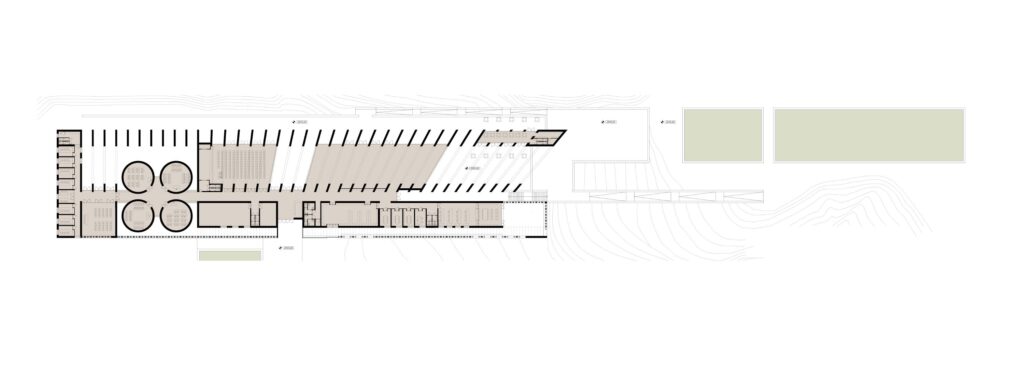
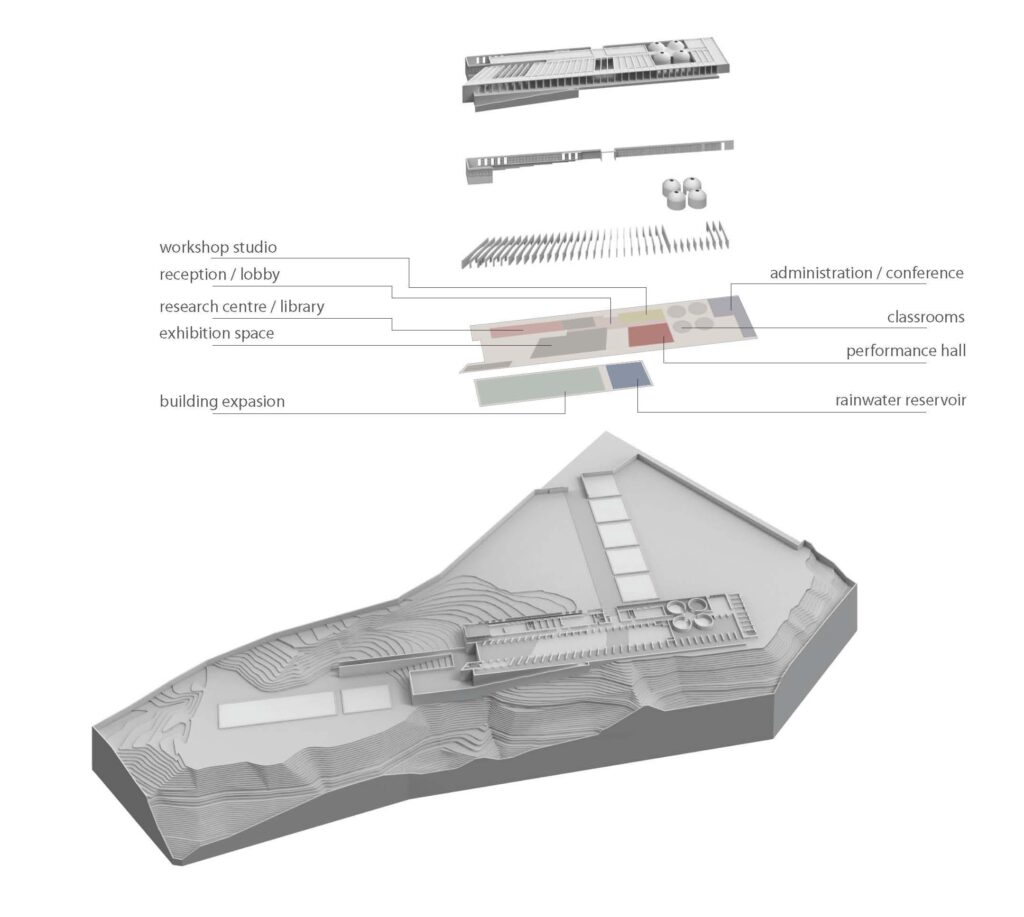

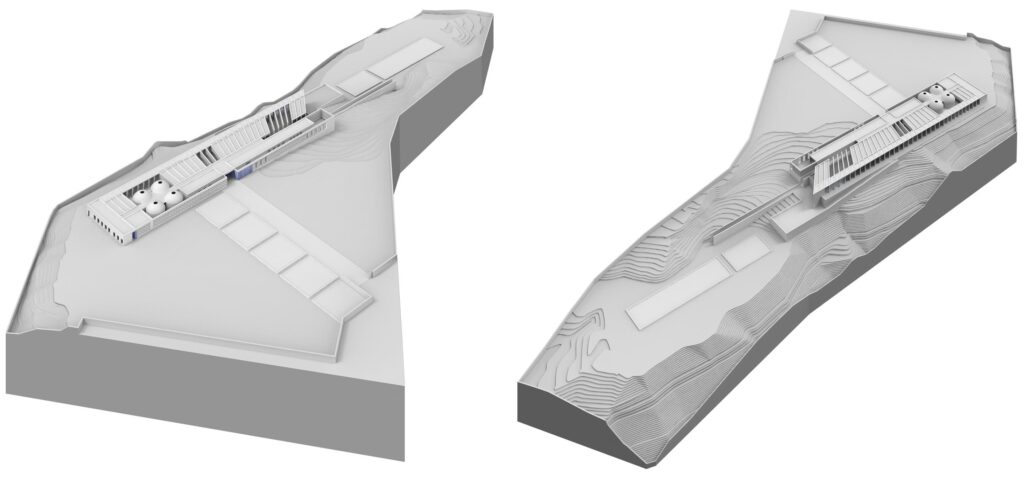
Projects Details:
Name: Bamiyan Cultural Centre
Location: Bamiyan, Afghanistan
Year: 2015
Typology: Cultural Architecture
Surface Area: 26,000 sq. m.
Built Area: 2,200 sq. m.
Designed by: Arrigoni Architett
Team: Valentina Satti, Giovanni Tanini, Valerio Cerri
Client: UNESCO, Ministry of Information and Culture of Afghanistan
Additional Information: Competition Entry in the Design competition for Bamiyan Cultural Centre
Description: Fabrizio Arrigoni
Drawings and Renders: Arrigoni Architett


